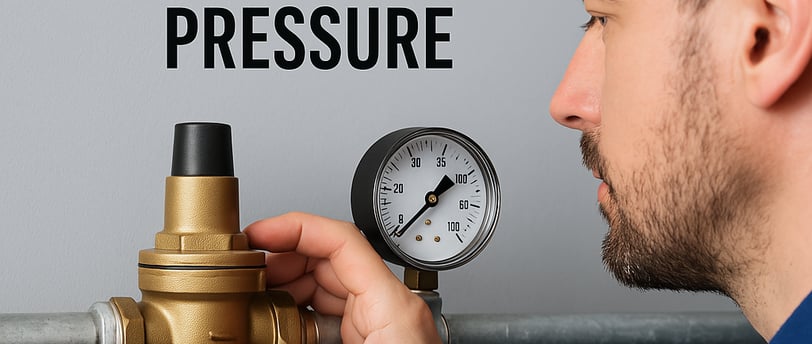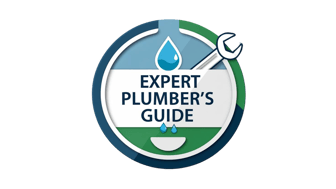Troubleshooting Low Water Pressure: Causes, Solutions, and When to Call a Plumber
Discover common causes of low water pressure, effective DIY solutions, and when it’s time to call a professional plumber to restore proper flow in your home.
PLUMBING TIPSLOW WATER PRESSURE
Introduction: Why Low Water Pressure Matters
Low water pressure can be more than just a minor inconvenience—it can affect your daily comfort, water usage, and even appliance efficiency. Whether you’re struggling with a weak shower or slow-filling sinks, understanding the root causes and knowing when to call a professional plumber is essential.
In this article, we’ll break down:
The most common causes of low water pressure.
DIY solutions you can try.
When it’s time to hire a licensed plumber.
1. Common Causes of Low Water Pressure
Low water pressure can stem from a variety of sources, ranging from simple fixture issues to more complex problems with your home’s plumbing system.
A. Clogged Aerators and Fixtures
Over time, mineral buildup (like calcium and lime) can clog the aerators in faucets and showerheads, reducing water flow. This is especially common in areas with hard water.
✅ How to check:
Unscrew the faucet aerator or showerhead.
Inspect for visible debris or scale.
Soak the parts in white vinegar for 1-2 hours to dissolve buildup.
B. Partially Closed or Faulty Shut-Off Valves
If you’ve recently had plumbing work done or turned off the water supply, the main shut-off valve or individual fixture valves may not be fully open.
✅ How to check:
Locate the main shut-off valve (usually near the water meter or where the main line enters your home).
Ensure it’s turned fully counterclockwise.
For fixture shut-off valves, make sure they’re fully open.
C. Leaking or Corroded Pipes
Leaks or corrosion in your water supply lines can reduce water pressure significantly. Signs of corroded or leaking pipes include:
Discolored water (rusty or brownish).
Unexplained water stains on walls or ceilings.
An increase in your water bill without higher usage.
✅ DIY Tip:Check for visible leaks around exposed pipes, faucets, or under sinks.
For hidden leaks, monitor your water meter:
Turn off all water in the house.
Check the meter.
If it continues to move, you likely have a leak.
D. Water Pressure Regulator Issues
Some homes have a water pressure regulator installed near the main line. A malfunctioning regulator can cause either low or high water pressure.
✅ How to check:
Find the bell-shaped regulator near the water meter.
Use a water pressure gauge to measure the PSI.
Ideal range: 40–60 PSI.
If it’s significantly lower, the regulator may need adjustment or replacement.
E. Municipal Water Supply Issues
If your neighbors are also experiencing low water pressure, the issue could be with the municipal water supply. This can happen due to:
Water main breaks or repairs.
Seasonal demand surges.
✅ What to do:Check with your local water authority.
If they confirm ongoing maintenance, you’ll have to wait it out.
2. DIY Solutions for Low Water Pressure
If you’ve ruled out major plumbing issues, try these simple fixes:
✔️ Clean or replace aerators → Improves water flow at sinks and showers.
✔️ Check and adjust pressure regulator → Maintain optimal PSI.
✔️ Clear clogged pipes → Use a safe, eco-friendly drain cleaner or call a plumber for hydro jetting.
✔️ Install a water softener → Reduces mineral buildup in hard water areas.
✔️ Replace old fixtures → Newer faucets and showerheads are designed for better water efficiency.
3. When to Call a Professional Plumber
If DIY solutions don’t resolve the issue, it’s time to contact a licensed plumber.
✅ Signs it’s time for a pro:
Sudden, drastic drops in water pressure.
Multiple fixtures affected simultaneously.
Visible pipe damage or leaks.
No water pressure at all.
💡 Expert Plumber’s Tip:
Hiring a professional ensures the problem is properly diagnosed and fixed. A plumber can:
Perform a full system inspection.
Identify hidden leaks or corroded pipes.
Replace faulty pressure regulators or valves.
4. Preventing Future Low Water Pressure
Regular plumbing maintenance can help prevent future issues.
✅ Preventative tips:
Flush your water heater annually to remove sediment buildup.
Install a water filtration system to reduce mineral deposits.
Check and replace old plumbing fixtures every few years.
Insulate pipes in colder climates to prevent freezing.
Conclusion: Restore Proper Water Pressure with Confidence
Low water pressure can be a nuisance, but with the right knowledge and solutions, you can identify the cause and take effective action. Whether it’s a clogged aerator or a larger plumbing issue, keeping your system well-maintained is key.
If you’re experiencing ongoing water pressure problems, don’t hesitate to call a professional plumber. Expert Plumber’s Guide is here to help you navigate plumbing issues with confidence.


